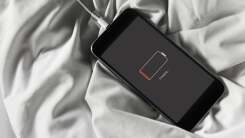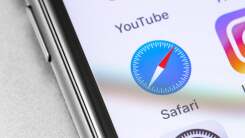How to Get the Cheapest Disney+ Plan
Since Disney+ launched in 2019, the streaming service has acquired over 86 million paid subscribers, and this month at Disney’s Investors Day event th

Battery health is important, right? After all, our portable devices depend on them. These days, though, it’s actually not worth stressing about their health as much as you might think.
Both tech enthusiasts and regular users generally want the same thing: to maximize how long our smartphones and laptops last on a given charge. But we also want to ensure that the inevitable—and it is inevitable—battery degradation is slowed as much as possible. So how much do batteries degrade? And how much should we worry about expensive replacements, or buying a new phone when our batteries start to die?
As batteries age and degrade, they lose their ability to hold a full charge. One of those reasons is due to cycles: One battery cycle is defined as using up all your battery’s energy, which sounds simple enough, but that doesn’t just mean going from 100% to 0%. If you used half of your laptop’s battery one day, charged it up, and then used another half the next day, that would really be one cycle.
Another issue is extended time on a full or high charge—it’s the reason many battery-minded people try to keep their devices off the chargers overnight. The idea is to avoid devices staying charged so high, as keeping batteries at these percentages for extended periods of time has been shown to degrade them faster.
The core technology of lithium-ion batteries has remained largely the same, but manufacturers are implementing software solutions to help slow the degradation without us needing to do much on our end. One of the most common strategies we see these days is battery health optimization. There are different names for this feature depending on the manufacturer and the device, but the idea is the same: Your device studies your charging habits over a set period of time, then determines when you most likely need your battery at 100% capacity. Until that time, the device will hold its charge at 80% when plugged into power, only resuming charging when doing so would get you to 100% at that set time.
That 20% difference both keeps your battery below 100% for longer, and slows down the battery cycle count if you happen to unplug your device while at 80% battery. Both of these factors can slow your batteries’ aging, which means more time on battery power for your devices.
It’s a handy feature that pops up across devices. Smartphones, laptops, even wireless headphones like AirPods Pro analyze how you charge your devices to only get to 100% when you’ll need it. For these smart devices, don’t bet against the house—there’s just less need to painstakingly worry about when to take your devices on and off the charger, so long as you do so consistently.
For something like your smartphone, your best bet might be to just leave it plugged in while you sleep. Your phone will figure out the routine, and keep its battery around 80% for most of the night.
But even battery optimization aside, you shouldn’t devote too much stress too worrying about battery health. Batteries degrade; it’s just what they do. Eventually, you’ll notice a difference in your device’s ability to hold a charge. And, at that point, it might be worth just replacing the battery.
An iPhone battery replacement, for example, costs $49 or $69 depending on your particular model. That’s not necessarily cheap, but compared to the cost of upgrading your device, it’s a deal, and you’ll have a fresh battery to start the process all over again. In short, just enjoy your tech. And, just in case, don’t forget your charger.

Since Disney+ launched in 2019, the streaming service has acquired over 86 million paid subscribers, and this month at Disney’s Investors Day event th

It’s probably the first thing you try when your computer is acting up: turn it off and back on again. But should you restart or shut down? Well that a

Laptops manufacturers typically try to strike a balance between power, battery life, and heat concerns for a device’s default settings. Since everyone

It’s been just over a week since iOS 14.5 debuted, and we’ve spent a chunk of time going over the most interesting features the operating system has t

“Find and Replace” is one of the most fun tools for getting data organized, fixed, and in whatever final state you need, and our friends over at How-T

Google is going to start enrolling all of its users in two-step verification, if they haven’t set it up already. Will it come as a shock to some? Sure

Apple’s iOS 14.6 and iPadOS 14.6 launched this week, adding several new features to iPhones and iPad devices including new voice controls, expanded tr

How many times has this happened to you? You’re on a Zoom call and launch into a fantastic speech, only to look upon a sea of confused, concerned, and
We are a comprehensive and trusted information platform dedicated to delivering high-quality content across a wide range of topics, including society, technology, business, health, culture, and entertainment.
From breaking news to in-depth reports, we adhere to the principles of accuracy and diverse perspectives, helping readers find clarity and reliability in today’s fast-paced information landscape.
Our goal is to be a dependable source of knowledge for every reader—making information not only accessible but truly trustworthy. Looking ahead, we will continue to enhance our content and services, connecting the world and delivering value.